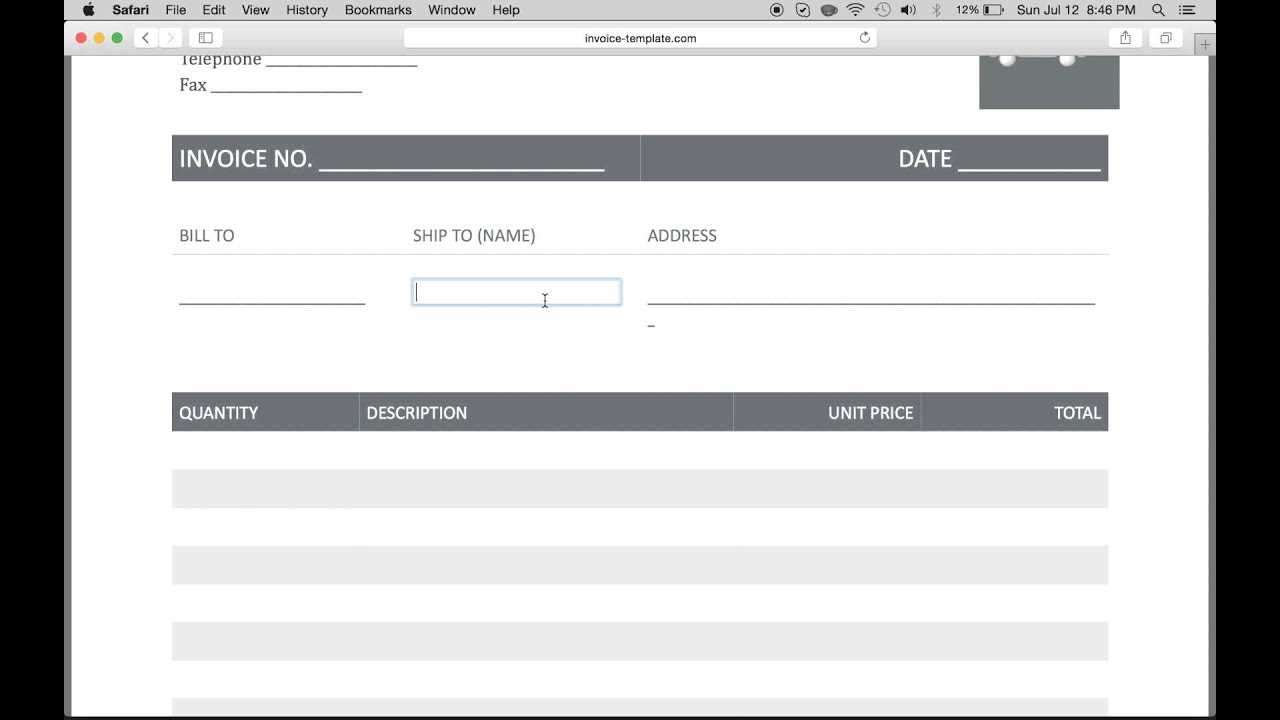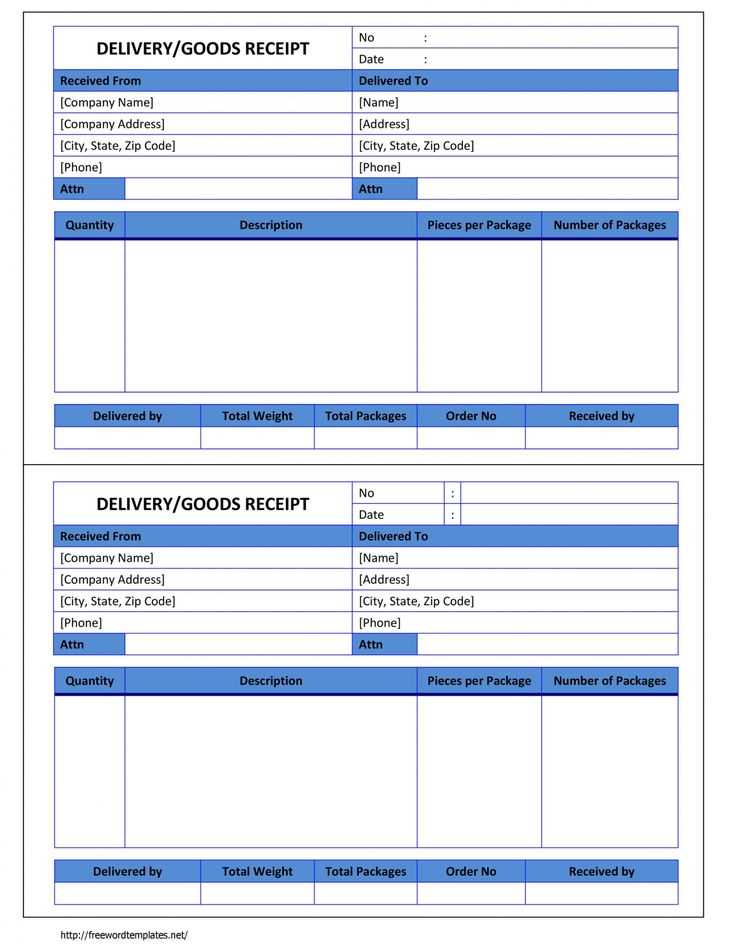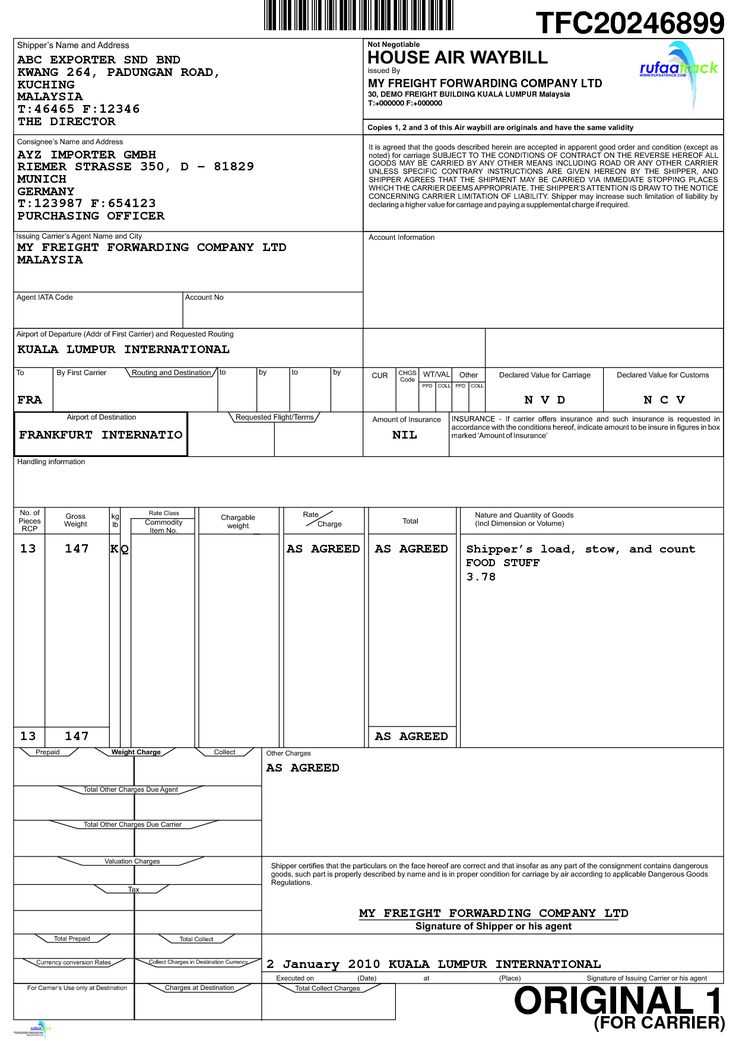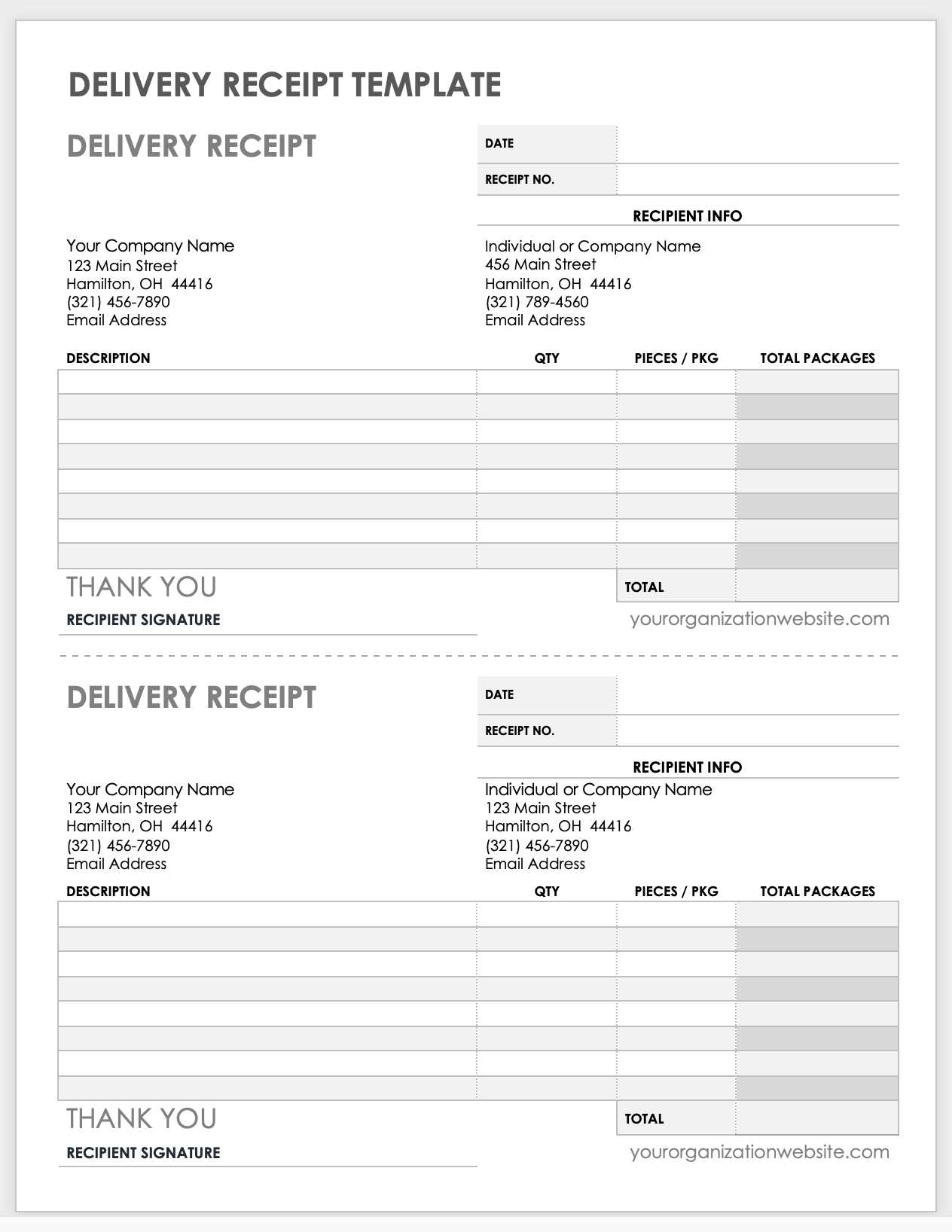
Use a freight cargo receipt template to streamline your shipping and logistics processes. This document serves as proof that goods have been handed over to the carrier for transport. Make sure to include all necessary details such as the consignor’s and consignee’s information, description of the cargo, weight, and the shipping method.
Ensure accuracy by verifying all shipment details before issuing the receipt. This prevents confusion and ensures that both parties are aligned on the terms of the shipment. The template should be clear and straightforward, avoiding unnecessary complexity while covering all important information such as tracking numbers and delivery dates.
Stay organized by using consistent formatting. This helps in tracking shipments and handling any potential issues that may arise during transit. An efficient template should also provide space for the signature of both the sender and the receiver, ensuring mutual acknowledgment of the cargo’s condition and transfer.
How to Design a Clear and Accurate Freight Cargo Receipt
Design a freight cargo receipt by including key details to ensure accuracy and clarity. Each receipt should contain the sender’s and receiver’s contact information, including names, addresses, and phone numbers. This ensures both parties can easily communicate in case of issues.
Include Cargo Details

List the type, quantity, and description of the items being shipped. This can be done with clear categories such as weight, volume, and packaging type. Use precise measurements and avoid ambiguous terms. Ensure the product codes or reference numbers are included to prevent confusion.
Define Payment and Shipping Terms
Clearly state the payment terms and responsibilities, such as who is covering shipping costs, insurance, and customs duties. Indicate the delivery schedule and expected arrival date. Specify any special handling instructions and any potential restrictions regarding the cargo.
Key Information to Include in a Freight Cargo Receipt Template
Ensure your freight cargo receipt template includes the following details to avoid confusion and ensure smooth transactions:
1. Shipper and Receiver Information
List the full names, addresses, and contact information for both the shipper and the receiver. This helps identify who is sending and receiving the goods. Accurate details prevent delivery issues and ensure the right parties are contacted if necessary.
2. Cargo Description
Provide a clear and specific description of the cargo being shipped. Include details like the type of goods, quantity, weight, and dimensions. This section verifies what is being transported and can be crucial for customs and insurance purposes.
3. Shipment Dates

Specify the date when the goods were shipped and the expected delivery date. This establishes a timeline and helps track the status of the shipment.
4. Tracking Number
Include a unique tracking number that links the receipt to a specific shipment. This allows both parties to track the progress and location of the cargo easily.
5. Terms of Delivery

Clearly state the terms under which the cargo is being delivered, such as Incoterms (e.g., FOB, CIF). This ensures both parties understand who is responsible for what at each stage of the shipment process.
6. Payment Information
Note the payment method, amount, and any applicable taxes or fees. If applicable, include payment terms, such as whether payment is due upon delivery or prior to shipping.
7. Carrier Information
List the name and contact details of the carrier handling the shipment. This information is important for follow-ups and potential claims related to damages or delays during transit.
How to Customize a Freight Cargo Receipt Template for Different Shipment Types
Customize your freight cargo receipt template by adjusting key fields to match the specific needs of different shipment types. Start by modifying the “Shipment Type” section to clearly state whether it’s a standard, expedited, or oversized shipment. This distinction will help streamline processing and ensure that all parties involved understand the specifics of the shipment.
For standard shipments, include basic details such as weight, dimensions, and delivery destination. For expedited shipments, add additional fields for priority handling, special instructions, or time-sensitive delivery information. Oversized shipments require extra space on the template to list unique handling instructions and any applicable surcharges due to the size or weight of the cargo.
Consider adding sections for tracking numbers and carrier-specific details. This is especially useful for shipments that involve third-party logistics or multiple transport modes. If you’re handling international freight, make room for customs declarations, tariffs, or any import/export-specific fields, which differ based on the shipment’s origin and destination.
Finally, update the payment section to reflect the pricing models for different shipment types. Expedited or oversized shipments often have higher rates, so include breakdowns for these costs. By customizing these sections, you ensure the receipt reflects the exact nature of each shipment type and meets the requirements of both shippers and recipients.


